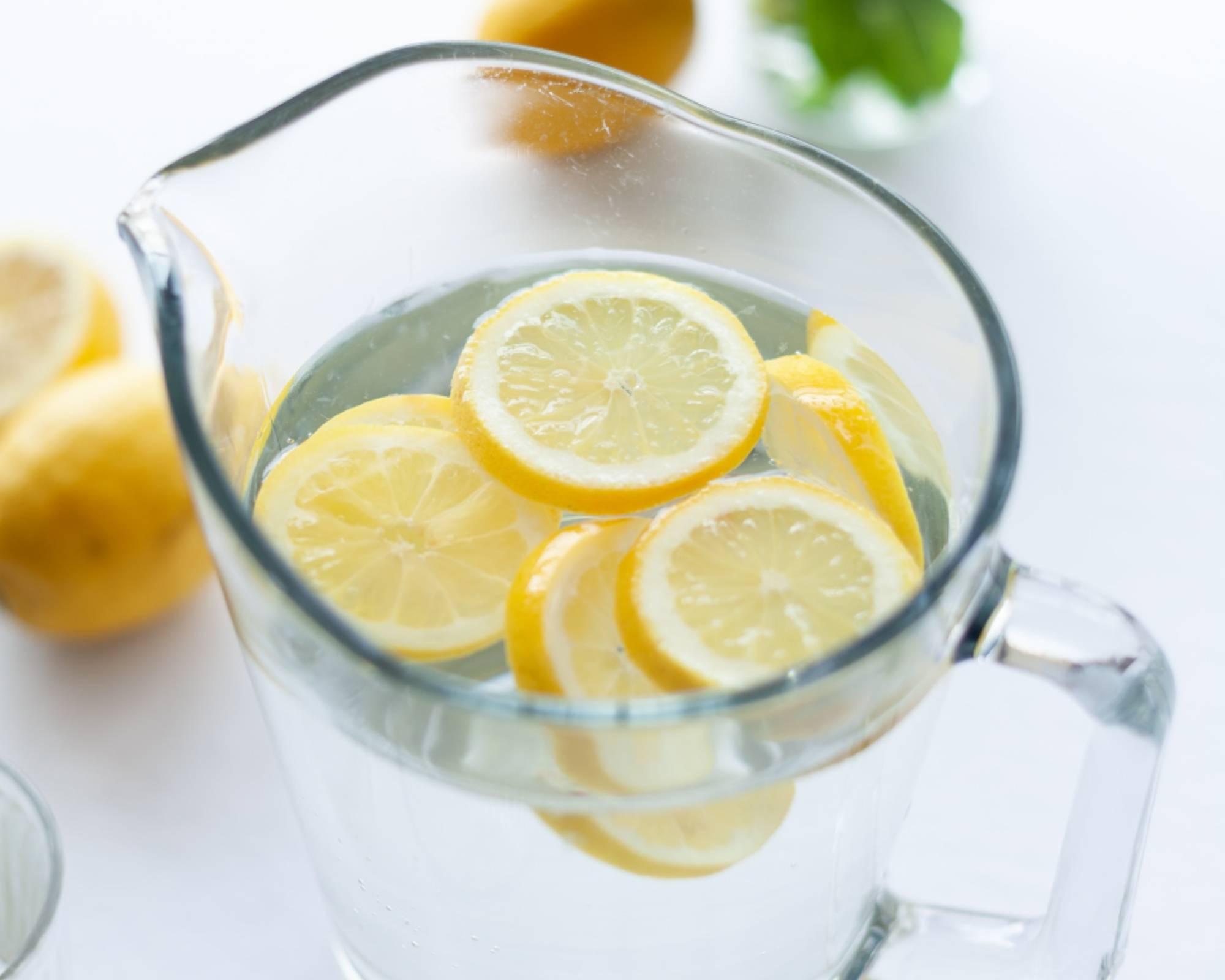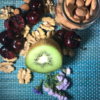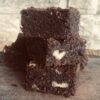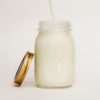 Reading Time: 6 minutes
Reading Time: 6 minutes
By Sarah Bengochea
How many times have you eaten today?
Your answer may be once, twice, three or more times. But perhaps it’s more like eight, nine or even ten times….. “What” I can hear you say, “no no I definitely don’t eat ten times a day, that’s impossible”. My response would be how sure are you?
I was doing this little question and answer session with my mum just the other day, she was so sure that she had only eaten two meals on this particular day, she said with absolute confidence “i’ve only eaten two meals today Sarah”, and she rattled off all that she had eaten. Sounded delicious I might add!
I then asked her to count the amount of drinks she had consumed, and she listed off 5 cups of coffee with a dash of milk, 1 gin & tonic, 4 large glasses of water with a squeeze of lemon.
When we naturally think of eating and food, we tend to discount what we drink as food. In essence that day my mum had eaten 12 times. The milk in the coffee, despite only being a dash, is food, it’s a substance that contains lactose, fat, protein, etc, which = food, the gin and tonic has alcohol, sugar, fructose among others, which = food, the water with a squeeze of lemon has fructose from the lemon, which = food.
This understanding or questioning around the number of times we eat in a day is a core element of our ethos here at WIM. Our premise and health philosophy is all about ‘What It Means to Be Human & Live Health’. We would beg the question, is eating 12 – 15 times a day actually normal for a human being? Is it actually healthy? In actual fact we might argue, eating even 3 meals and snacks each day isn’t necessarily the best way to ensure good health and maintain a healthy weight.
Paying attention to how often you eat or drink something may naturally restrict calories and help regulate hunger signals. It can encourage metabolic flexibility and more frequent fat burning, may boost cognitive function, reduce inflammation, or may even boost longevity.
There are many people who are keen to try out a fasting or meal frequency approach. But it’s not that simple, there are a huge variety of methods, much confusion about what and how to do it and what is safe. Everyone is different with different individual biomedical and psychological needs. We support clients to find a strategy that suits their lifestyle considering their medical history and any health concerns.
Once a person gets started one of the responses that comes up a lot during our training is how surprised people are when they discover that even milk in tea or coffee or a sneaky G&T with zero-calorie tonic is actually food and can influence metabolism and break a fast.
What Can I Drink That Won’t Break My Fast?
Perhaps a good rule of thumb is if you need to stir, squeeze or shake your drink it’s best avoided during your fasting window. The idea of a fasting window is not to consume any ‘food’ substance – anything that provides you with a source of fats, proteins, carbohydrates during that designated time period.
With that being said, despite substantial research on the benefits of fasting itself, there is little evidence on what actually breaks your fast, and what specifically to drink or not during that time frame. I mention this as there is a wealth of information floating around the internet that refers to anything below 50 calories won’t break your fast, or as long as your consuming zero calories your fine, or the only way to fast is through a ‘pure fast’ where water only is recommended, or there is the fat fast (adding coconut oil, MCT oils or butter to your morning coffee). So let’s have a little look at some of these options quickly:
The Pure Fast – Water Only
Water, and water only. The stand out benefit of this approach is there are no questions asked, there is no doubt about what you can consume during your fasting window – it’s water and water only.
The Caffeinated Fast
Caffeinated drinks such as black coffee, tea, green tea or yerba mate consumed without milk, sugar or sweetener can be useful during a fasting period. They have nearly zero calories, the additional caffeine boost can help to maintain energy, they contain antioxidants, and can be an effective tool to make fasting and fasted training much easier.
The Fat Fast
If you’ve spent some time researching fasting approaches on the internet, you have most likely read about adding MCT (Medium Chain Triglycerides) such as those derived from coconut oil or grass fed butter to your coffee. This approach may be advantageous to individuals such as sport professionals or highly active people, those experiencing hormone imbalance, or those looking to maintain their weight but still want to benefit from some of the ‘ health perks’ provided by fasting.
Herbal Teas and Flavoured Water
Drinks that perhaps make a fasting window enjoyable are herbal teas and water flavoured with citrus peel or herbs. There is no definitive evidence as to whether and to what extent these elements could break a fast. However, common sense would suggest if you add the actual fruit or fruit juice such as a lemon wedge or squeeze you will get some food like substances in the water. If you make herbal tea with the powdered version of a herb or spice rather than the whole piece then you are including food elements. So here the lines are grey but we suspect a slice of peel or a sprig of a herb may be just fine.
SPECIAL NOTE : On Diet or Zero Calorie Soft Drinks
Despite them containing very few or zero calories, we don’t believe they contribute to your health, in particular zero calorie artificial sweeteners such as aspartame, sucralose, and saccharin have shown in research to be counterintuitive when it comes to weight loss and metabolic health.
Growing research is showing that when we consume ‘low-calorie’ products, the tongue “tastes” the sweetness and sends a message to the brain “SUGAR/ENERGY INCOMING”, but as the food travels down, the brain starts to ask a few questions – like hey I thought you ate lots of sugar, I’m preparing insulin and all sorts of chemical processes to manage it but it’s not here – where is it?? So according to your brain there is now an energy deficit let’s say, and so your satiety levels are not met, and guess what…. Your brain says eat! Signalling the behaviour to search for food (energy) again to help balance the deficit. So in our opinion it’s much easier to not even board this hunger generating train at all and stay away from those diet drinks all together.
Summary Table
| Pure Approach | Flexible Approach | Avoid During Fasting Window |
|---|---|---|
| Water Sparkling water | Water Sparkling water no artificial flavours Black Tea Black Coffee Green Tea Natural Herbal Teas Herbal Tea Mate (South america green tea) | Tea or coffee with milk, sugar or sugar substitute Bone broth Apple cider vinegar Miso soup Marmite or vegemite Water with squeezes of fruit juice Diet soda’s (always say no!) Collagen powder Coconut oil / butter / fats Low calorie/zero calorie sugars Alcohol |
For more info on Fasting, the different regimes, benefits, safety, check out our Intermittent Fasting 101 blog!
So while I have summarised some of the benefits of fasting, and taken a quick look at what drinks are likely to break a fast, I recommend you work with a WIM Nutritionist before embarking on a fasting programme. Why? Because when it comes to fasting and health, there is NO one size fits all. For some fasting may not be appropriate at all, guidance should be personalised to suit the current health status of an individual, their lifestyle, their personal health and fitness goals.
Intermittent Living With WIM
This adjustment of windows is all about flexibility and learning to embed flexible practices that support your overall health whilst providing you with the flexibility and ease to live life. Here at Weight In Mind we are purveyors of Intermittent Living in all its forms not only when it comes to food. For example:
Feasting -> fasted
Thirsty -> quenched
Intense movement -> gentle movement
Heat -> cold
We believe that too much rigidity, restriction, on or off protocols, can contribute to poor health. Flexibility, intermittency, ebb and flow (the science of hormetics) is an overall approach that we use within our clinic here at WIM. Research has and is continually showing that intermittent living, not just intermittent fasting is an effective antidote to modern living, providing beneficial effects to overall wellbeing, immune function, metabolic function, weight management, premature ageing, inflammatory markers among others.
If you’re looking to live well, improve your overall health, perhaps drop a few kilos, feel good and energetic you may want to think beyond a basic fasting regime and join a Weight In Mind Health Gains & Weight Management programme so that you too can start to understand what it actually means to be a healthy human (through science and nutrition), create your very own flexible intermittent living plan, and develop a mindset to live it with ease.







